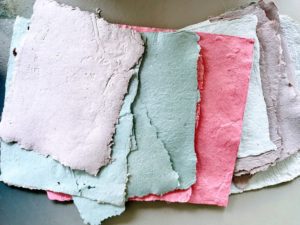Everything, everything, I mean, EVERYTHING we use and have comes from the earth. That’s the clothes we wear, the homes we live in, the food we eat, the vehicles we use, the phones we talk on, etc., etc., etc. Did you ever think about how glass is made? What about the soda can you might drink out of? Where does that come from? And that little plastic tab that comes on your bread so it can stay fresh? It’s crazy to think all of that came from the earth. At Sustainable Schools we often focus on how to reduce waste by recycling or reusing but the first “R” of Reduce, Reuse and Recycle (we like to say there are many more Rs) is first for a reason.
When we know the work and materials that go into making a product, the idea of using something only once doesn’t seem to make sense — and therefore reducing our consumption of that product helps to save our natural resources! It just makes sense. In this series, we will explore how things are made from our natural resources and how its production affects our environment. We will be exploring paper in this lesson.
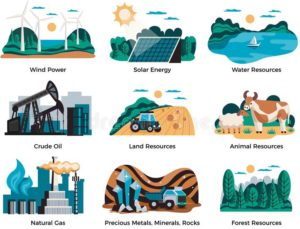
So, how is paper made?
Let us first take a moment to think about our usage of paper. Are you aware of how much paper you use regularly? We use it for toilet paper, our egg and milk cartons may be made with paper, things you receive in the mail are made with paper, your cereal boxes, napkins, and so many more things are made with paper!
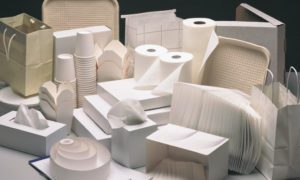
Paper, as you may know, is made from trees. But, in order to turn trees into paper, there are a series of steps it needs to take, and all of the steps require the use of natural resources.
Learn about the process of making paper, and then navigate your way through the slides below to learn more about what natural resources are involved in the process of making paper.
Environmental impacts
From the slides you see various natural resources are used in order to go from tree to paper. A lot of fuel is used (most likely gas or oil which are fossil fuels, and sometimes biomass), freshwater is used in the process, and of course lots of trees are used.
The reason why the use of these natural resources are a concern is because when we burn fossil fuels, greenhouse gases are produced. Read our lesson on Renewable vs. Non-Renewable Energy Sources to learn more about our use of fossil fuels and how it impacts the environment.
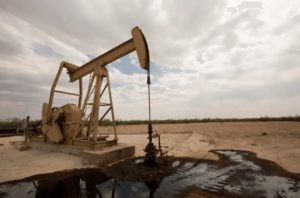
A lot of freshwater is also used in the process of making paper, and freshwater is a finite resource!
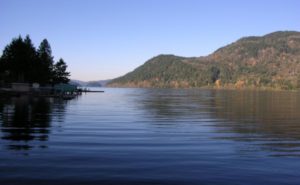
Lastly, many trees are required to produce the amount of paper everyone uses, and this is a concern because deforestation has lots of negative impacts on the ecosystem such as less biodiversity, less habitat and food for wildlife, less trees to take in carbon dioxide, and much more!
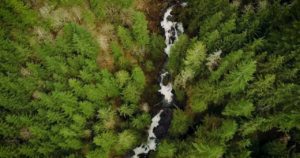
So what can you do?
How can we save all those natural resources? One of the simplest ways is to RECYCLE! The video you watched above showed that 17 trees are saved when our recycled paper is made into new paper! (And lots of fuel as well since we don’t need machines to log and transport those 17 trees!) There are tips below for ways to REDUCE and REUSE paper, but paper is one of the easiest things to recycle and it saves so many resources!
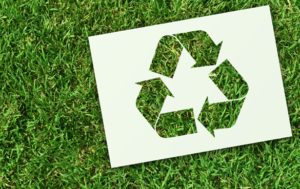
Did you know that a piece of paper can be recycled seven times?! But if you decide to throw it in the garbage, it goes to the landfill and there it will produce methane, a harmful greenhouse gas, and only getting one use as opposed to seven.
Disposing of paper that has been contaminated with food – like pizza boxes or paper towels shouldn’t be recycled – here in Whatcom County we can put that in our Food Plus bin where it will be composted and turned into soil!
Take Action
You can take action multiple ways and reduce the amount of paper used or recycled! Some things you can try:
- Make new paper out of used paper at home!

- Create something completely out of recycled or scrap paper!
- Sign up to no longer receive junk mail!
We would love to see what you do!
Take a picture or video of what you create and send them to us or tag us on Instagram (@resources_protects)!
Other ways to reduce
There are multiple other ways you can reduce the amount of paper that you use. For example:
- If you see a flyer and would like a copy, take a picture of it instead
- Make sure to use both sides of a piece of paper before recycling it
- Subscribe to online magazines, or sign up to receive paperless documents
- Only print pages that you need, and use double-sided printing if possible
- Use paper that is made from hemp or cotton or elephant poo!
It is pretty easy to save paper!
Continue learning!
There are lots of topics for you to choose from. Don’t stop here; move on to discover another lesson! New lessons uploaded each week.

